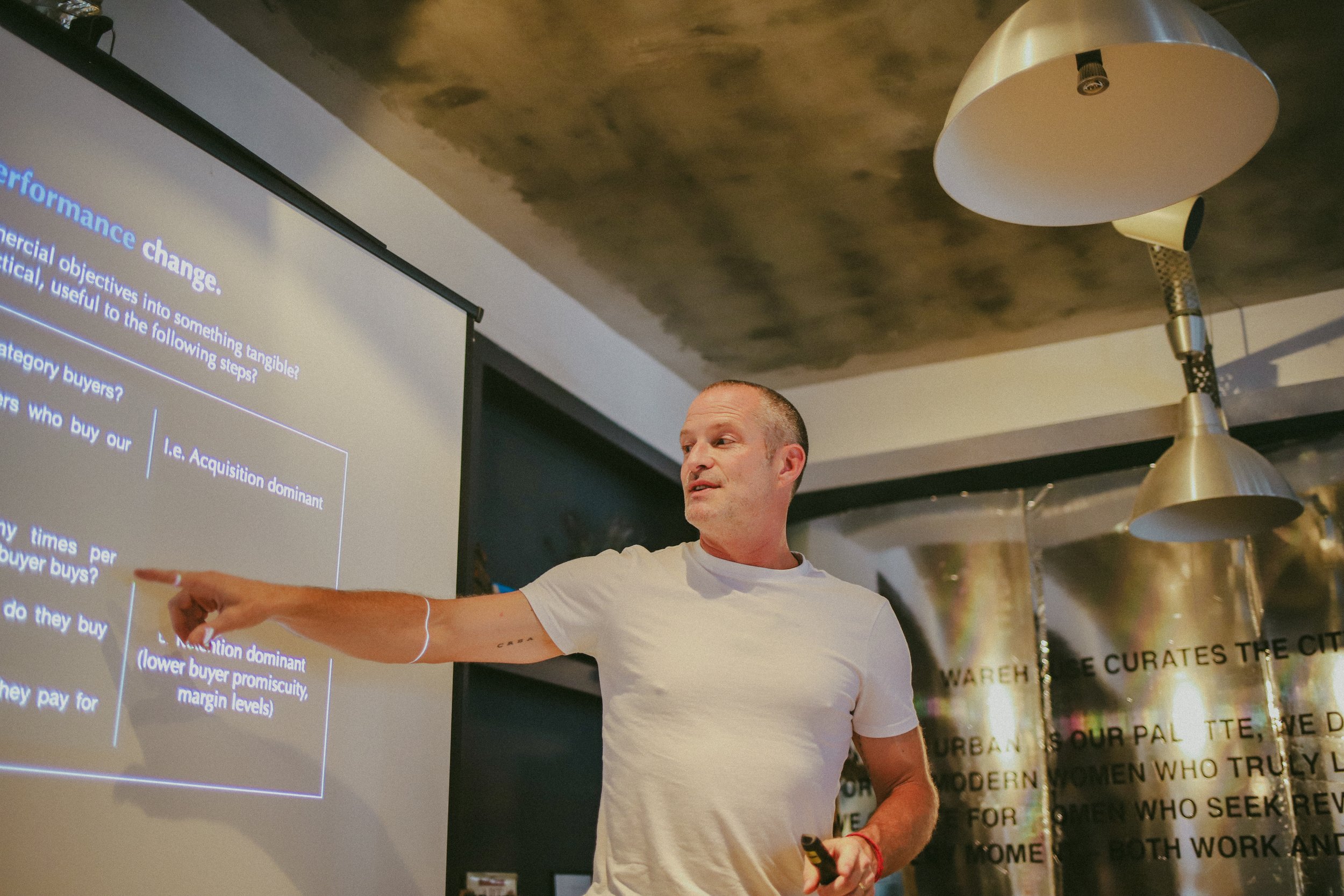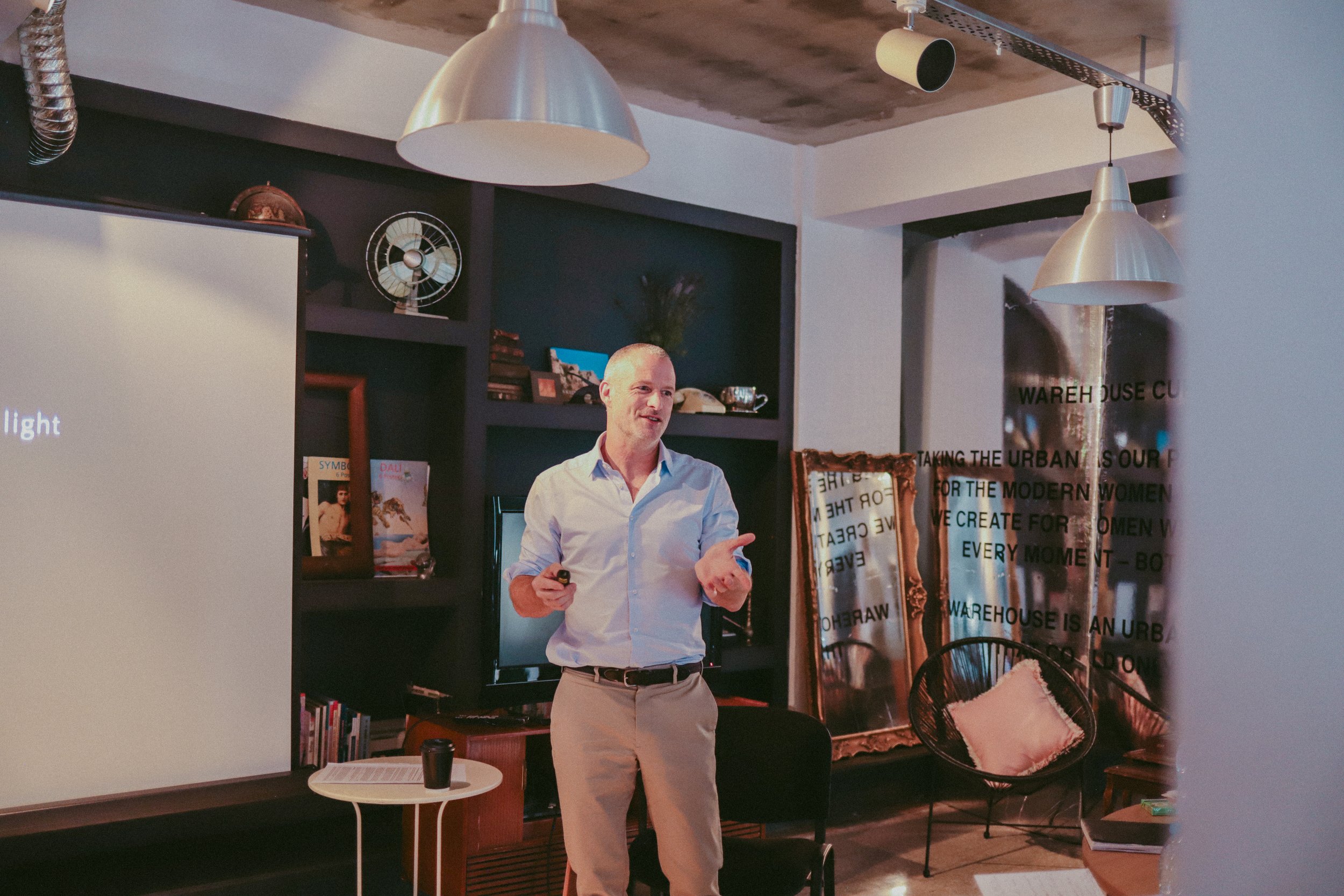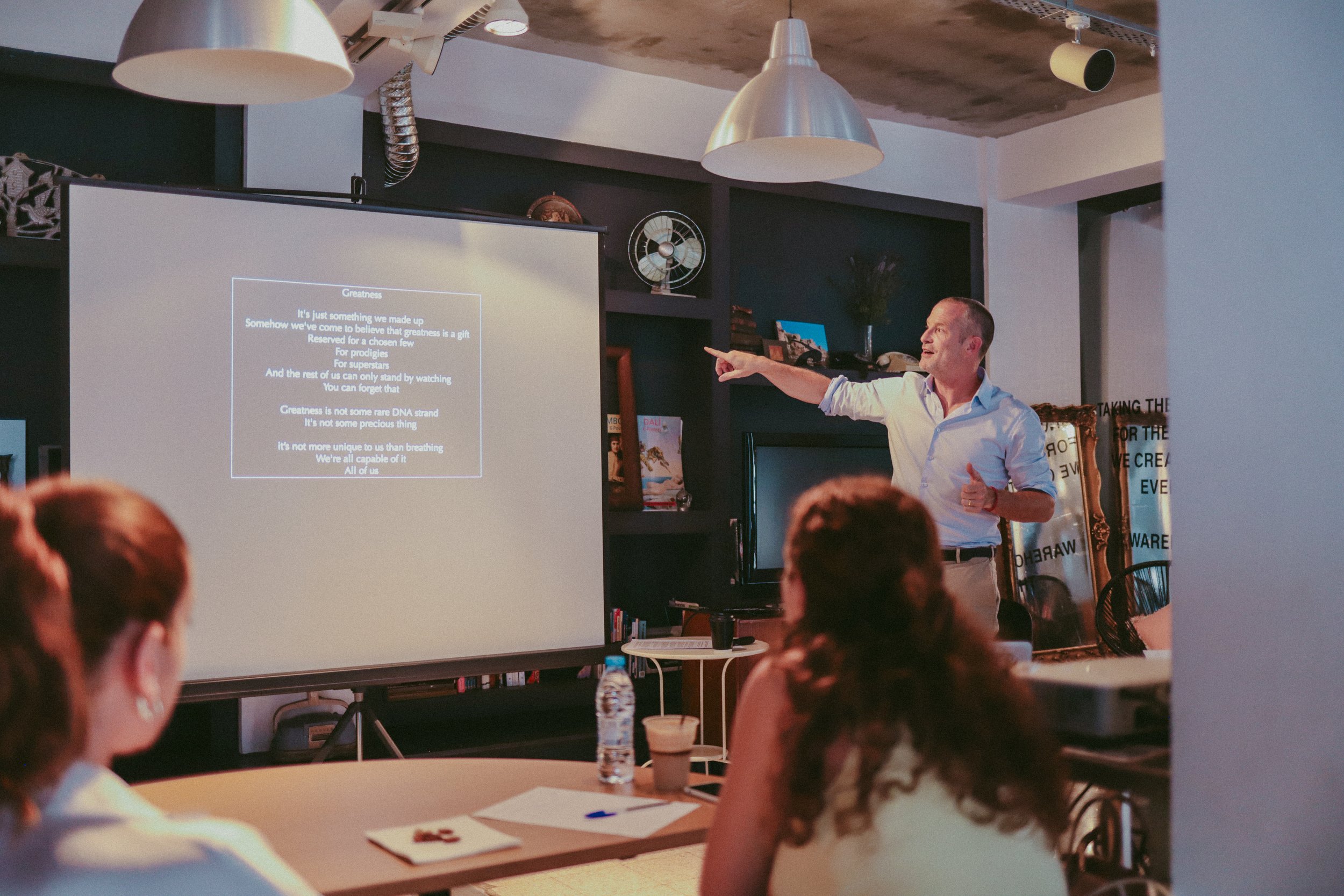
CONSULTING AND ADVISORY
Transformative thinking, ideas and action. I offer three intrinsically linked types of help to organisations. These are either as a consultant or an ongoing adviser.
BUSINESS & INNOVATION STRATEGY
At the very centre of an organisation is what it does and how it does it. I have a unique ‘Transformative Theory’ based model of strategy for both core business and innovation.
It’s hard to be different if you are using the same system as everyone else (think Vision, Mission and Purpose). This approach is as grounded and practical for the entire organisation, as it is motivating inside and out, as a business driver and innovation engine.
BRAND STRATEGY
I prefer to call this a ‘Framing strategy’ because essentially it is how to re-frame the organisation, its products or service in such a way that delivers maximum interest and engagement from key audiences.
It starts with finding an idea that is grounded in the category but about much more than the category.
To ultimately create a sense that it is in a category of one.
Providing a new way for people to think about how they tackle their jobs to be done and create value and capability bridges to new opportunities and protect against threats.
MARKETING & CREATIVE STRATEGY
Effective marketing is about connecting the commercial objectives, the market performance to the behaviour change required. It’s incredibly easy to overcomplicate, so I keep it simple:
I work backwards from the audience: Who, Needs to do What, by When. Defining their most potent triggers and barriers, the organising idea and then the activities needed: What do we do, when and where. And measure as many of these steps as you can.
Netflix
Toyota
Lombard Odier
Land Rover
Stella Artois
Lloyds Bank
NSPCA
United Nations
MS Society
Surf Life Saving Australia
NRMA Insurance
ARTEX
MYMYND MENTAL HEALTH
HYUNDAI
JOHN SMITHS TRUST
ASTON MARTIN
ENGAGE
IBM
VODAFONE
THE SCHOOL OF LIFE
CENTRE FOR DEMOCRACY & PEACE BUILDING
BRITISH AIRWAYS
WEETABIX
CESCA
MICROSOFT
LI NING
OMO/PERSIL
LYNX
HEAD & SHOULDERS
SYFE WEALTH
QUANTUM DETECTORS
Lexus
GUINNESS
Staropramen
Maserati
Cartier
Netflix Toyota Lombard Odier Land Rover Stella Artois Lloyds Bank NSPCA United Nations MS Society Surf Life Saving Australia NRMA Insurance ARTEX MYMYND MENTAL HEALTH HYUNDAI JOHN SMITHS TRUST ASTON MARTIN ENGAGE IBM VODAFONE THE SCHOOL OF LIFE CENTRE FOR DEMOCRACY & PEACE BUILDING BRITISH AIRWAYS WEETABIX CESCA MICROSOFT LI NING OMO/PERSIL LYNX HEAD & SHOULDERS SYFE WEALTH QUANTUM DETECTORS Lexus GUINNESS Staropramen Maserati Cartier

BUSINESS & INNOVATION STRATEGY
At the very centre of an organisation is what it does and how it does it. I have a unique ‘Transformative Theory’ based model of strategy for both core business and innovation.
Think of it as a better way to think about the hackneyed ideas of Vision, Mission and Purpose, one that is as grounded and practical for the entire organisation, as it is motivating inside and out, as a business driver and innovation engine.
STRATEGY AS A THEORY
Treating strategy as a theory is very useful because it captures the essence of what a good strategy is: an organising idea that shapes decisions, shapes actions, which can be tested and optimised.
It’s your theory that explains what and how you are doing is right. If it’s right, success follows. If it’s wrong something about the theory is wrong and needs changing. If it’s a good one, it’s consistent overtime, it explains why the organisation is structured like it is, why is it difficult to imitate or copy and how the parts work together.
For a strategic theory to work, it needs to be able to do three things:
Generalisable: Wherever it is found in the organisation, it explains, it guides.
Generative: It naturally inspires people and creates ideas that reinforce and extend the theory.
Growth: It is always in beta, it has the ability to constantly check itself, to run experiments and change.
THE WHAT: THE TAPI FRAMEWORK
How to formulate a potent organisational theory, and how do you know if it’s any good? Use the TAPI framework:
THEORY
Born of two convictions: A core conviction about your place in the world and the lives of those you want to help. What you want to be to them and why that’s important. About what business you are really in.
Here lies the Theories emotional depth: It must light a fire.
If the Core Conviction lights the fire, we also need a corresponding conviction that lights the way, defining how it is delivered, in the day to day: In the key capabilities, expertise and activities, and how those compliment and reinforce each other to create a rare value that is difficult to imitate.
Here lies the theories functional depth, breadth and reach.
These two convictions shape everything else, they are your Theory.
ACTION
What you do to deliver on that theory. In capabilities and how they reinforce each other, in networks and partnerships. In how the organisation creates but also nurtures ideas.
Between the THEORY & ACTION lies the feedback look that does three things: Senses: changes in situations in people, technology, culture. Shapes: an appropriate response. Seizes: that opportunity and challenge before someone else does it for you.
PERSONALITY & PRINCIPLES
Personality: Who are you? What are you like? This is about the other AI, Authenticity & Integrity. I have always found the word authentic a bit tricky, but here it is useful: If integrity is that sense of consistency, authenticity is that sense that you are consistently true to what you are.
Principles: We then need to look at the principles that define how these actions are done: How do you do what you do? What will you not do - your red lines, your guard rails? How do you treat others, how do you treat yourself? Especially in terms of environmental, ethical and social concerns? If your actions can’t be done without going against your principles, then either the actions, or the principles need to change: it’s an integrity filter.
IDEA
What is the idea of you? When you strip it all back, what is the simplest, most evocative sense of what you are and what you do?
It’s a manifestation of the theory and its convictions, it often expressed as ad line or what is known as a brand idea, but it can be much more than that. It can be a symbol of the change the organisations wishes to create, it can be something tangible people inside and out can rally around.
This idea also helps shape the equity assets that help make it feel different and distinct, help people identify it, from the logo to the language it uses, visual and verbal.
Using TAPI can be transformative, it sets the foundations for sustainably successful business.
THE HOW: CONVICTION WHEEL
Getting to a powerful theory is hard, but with the right tools it can get a lot easier. I use The Conviction Wheel to tease out a powerful theory.
It also allows you to get to a transformative brand strategy, covered in the next sectio

BRAND STRATEGY
I prefer to call this a ‘Framing strategy’ because essentially it is how to re-frame the organisation, its products or service in such a way that delivers maximum interest and engagement from key audiences.
The ultimate ambition is to find an idea that is grounded in the category but about much more than the category.
transformative brand strategy re-frames
There is a lot of BS and hot air in the Brand strategy world. It isn’t helped by confusion about what one actually is.
For me the simplest way to think about it is how you consistently frame your business, or products and services so that are most helpful to you in driving your business.
And what that comes down to is finding something that is grounded in the organisation and the category, but about much more than the organisation and category.
I have helped many organisations from pre seed start ups to global multinationals find transformative framing strategies.
I use a simple logical system based on analogy and metaphor, that tells a story and opens up possibilities to re-frame how it is seen and understood. It asks deep questions of what you are fighting against (it’s never the competition) , what you are fighting for (what does the world look like if you win) and a fundamental question about what business you are actually in.
It’s pictured here:
I

MARKETING AND CREATIVE STRATEGY
Effective marketing is about connecting the commercial objectives, the market performance to the behaviour change required. It’s incredibly easy to overcomplicate, so I keep it simple:
I work backwards from the audience: Who, Needs to do What, by When. Defining their most potent triggers and barriers, the organising idea and then the activities needed: What do we do, when and where. And measure as many of these steps as you can.
Flow of logic then a flow of effects
Done right Marketing is a flow of logic from Commercial objectives required by the business to the activities designed to deliver those objectives, and then a flow of effects back to the commercial objectives.
It’s a simple as that and it looks like this:
WORK BACKWARDS FROM BEHAVIOUR CHANGE
There is also an incredibly effective, simple system for creative development, it runs along the bottom of the triangle above, it’s the secret to great creative work, comms, channel planning and it looks like this:
“Just to say I’ve shown your work to a number of people, including a few agency creative types.
“F***ing genius” would probably cover it.”
Oliver B, Investor & Adviser
DISCOVER MY NEWSLETTER
A weekly newsletter with a simple ambition: To find practical ideas and thinking tools to better live and work by. Ways to reflect better, ways to reveal what is most important, ways to realise those ambitions in the lives we lead and the work we do.


